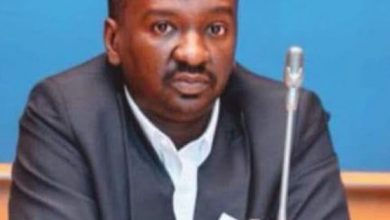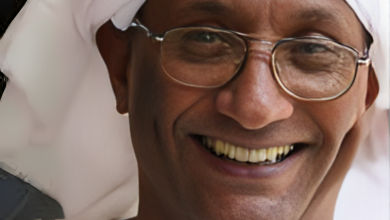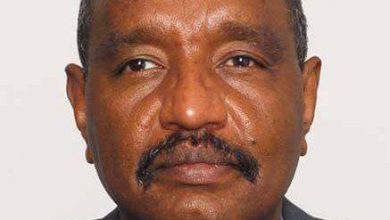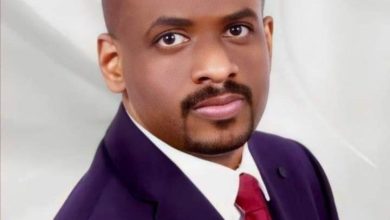Anatomy of Revolution :A Reading into Paths and Consequences of Sudanese Revolution (2)
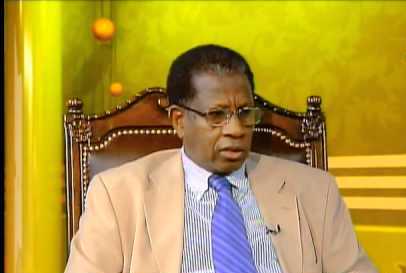
By: Al-Tijani Abdul Qader Hamed
We can easily notice that there is a correspondence between the Crane-Brinton model that we referred to in Episode (1) and the Sudanese case with regard to the first stage, where the Ingaz Regime collapsed for reasons that are almost similar to what was mentioned in the model. From stifling economic hardship, from bureaucratic inability and corruption in state administration, from an incompetent ruler, and from the abandonment of the ruling party by intellectuals who represent the conscience of the nation. As for the other additional factors that led to the fall of the Ingaz Army and were not included in the model, we can mention among them: the split that struck the leadership core of the Ingaz regime, the subsequent “cold war” among the Islamists, and the related protracted civil wars in the outskirts of the country, and its consequences. From human and material losses and an international siege. Accordingly, the regime’s ills multiplied at home and abroad, and the “revolutionary fever” that the model spoke of escalated and led to its downfall. If that is so, then we have no choice but to move to the second stage. The post-Ingaz stage, to see if it also matches the model, or has other characteristics that did not occur to Mr. Brinton.
Brinton’s model indicates, as we explained in the first episode, that this stage will witness an intensification of the conflict within the revolutionary forces, between moderates running the government and extremists who oppose it from the outside, and things will develop in the direction of a kind of “revolutionary crisis” that will in turn lead to a civil war at home or A war against a foreign party, thereby paving the way for terrorism and strongman control. Do we find any indications that the arena of conflict has already moved into the revolutionary forces? Can we confirm that the situation after the success of the revolution matches the expectations of the model?
Anyone who observes the current state of the Sudanese revolution cannot fail to see clearly that it does not reveal just one internal conflict, as the model predicted, but rather reveals a “double” internal conflict and multiple side conflicts surrounding it. As for the dual internal conflict, it has two hotspots: one hotspot in the belly of the FFC, which represented a political incubator for the revolutionary government, and another hotspot in the head of the transitional government between its military components and some of its civilian components. No one disagrees that the “FFC” coalition (which assumed the leadership of the popular revolution and determined its paths) is nothing but a fragile political alliance that was established in a hurry to catch up with the popular revolution, and it consists of multiple political groups, some of which are leftist in orientation, some of which are independent, and some of which belong to the There are small ideological parties, some of which belong to major traditional parties. The coalition also includes newly established civil groups and organizations, in addition to opposition armed revolutionary movements. The only consensus among these groups was to remove the old regime and restructure the state according to a loose political “declaration” that was also hastily formulated. On the other hand, no two also disagree that the transitional government that was formed in the wake of the success of the revolution was ostensibly a “partnership” government between the “ (FFC)” on the one hand and the security-military system on the other side, knowing that this system is the apparatus of the old regime. The same thing, but it abandoned it in the last moments, then modified itself and announced its bias towards the revolution. Therefore, this is an excellent candidate case due to the differences and internal discord predicted by the model. This was true in reality, as the various media outlets continued to transmit from time to time news about old alliances dissolving and new ones being formed, as well as transmitting mutual accusations between the leaders of the FFC. The matter went as far as one of the leaders of the FFC, and the head of the United Federal Party, declaring (in an interview with the newspaper) the existence of “groups within the FFC that lead the ruling coalition every day from failure to failure,” and then called for “correcting” the path of the FFC coalition. In that it deviated from achieving the goals of the revolution. Some journalistic sources wondered whether there were “entities” or “incubators” other than the FFC that were acting in what was an inherent right of the Sudanese people.
In addition, some loyalists to the FFC coalition usually say that the disagreements that appear in the newspapers between them are normal and indicate a sound democratic climate. However, the question that should be asked in this context is: Is what we see really a secondary disagreement between allies united by a vision? United, or is it a strategic dispute over visions, positions and programme? If we estimate (according to the information we have gathered) that the situation has reached the stage of strategic conflict, is it possible to see the two categories that the model predicts? A moderate faction at the head of the transitional government, and an extremist faction standing on the sidelines of opposition and competition?
A hasty researcher may not be able to notice any differences between the ministers and senior officials brought by the FFC, as they all raise the slogan of the revolution (freedom, peace and justice), and many of them are from the category of activists who are filled with anger against the old regime, and are striving hard to remove its institutions and symbols, and to establish a government. Full civilian sovereignty over its ruins, and they consider this to be the primary goal of the revolution. But if we shift from ideals and slogans and approach the details of policies, implementation mechanisms, and the constraints of reality, we will find that most of these ministers and senior officials have no source of power other than the worn-out government apparatus, the crumbling institutions of the Old Testament, and the empty treasury, with rising popular aspirations. They will discover that the one who holds the nerve of this apparatus, as it is, is the “Security-Military Council, with which there is a “partnership”; a partnership that they may not tolerate, but without which they will not be able to accomplish anything. Which means that they will necessarily be unable to change the situation with the required speed and efficiency, and they will lose… A lot of popularity and revolutionary support, just as the model predicted. As for the other elements of the leaders of parties and organizations who did not personally participate in the transitional government, they will stand on the high platform of the revolution, organizing million-man marches from time to time, launching “lives,” and issuing statements and statements, assuring the masses of the revolution. That they are the true representatives of the spirit of the revolution and its purity, that they are the true claimants of the blood of the martyrs, and that they do not accept compromises. They may be right in all of this, but they do not show a willingness to bear the responsibility of governance in the transitional period, and this hesitation and disagreement represents only one aspect of the “revolutionary crisis.” As the model predicted, but this is an issue that cannot be overcome except after in-depth consideration of the nature of the three-pronged “partnership” between the FFC, the security-military system, and the transitional government that resulted from them.
The “partnership” is three-fold
Many politicians and journalists describe the FFC as the political “incubator” of the transitional government. This may be true from a formal standpoint (since the FFC were the ones who drafted the constitutional document, formed the civilian government and headed it). But it is also true that behind the FFC there is a “deeper incubator” with stronger influence, but it does not appear in the media. This deep incubator includes influential Sudanese businessmen, important political leaders, ambassadors of major countries, ambassadors of the two Gulf states, and local “agents” on their behalf. This group was able to play the role of a true “incubator” and achieve two major successes: one on the (political) front, where it pushed the Military Council and the FFC (according to some sources) to reach an early partnership agreement (at the businessman’s home). The influential Sudanese Anis Hajjar on June 1, 2019 (and you should note this date), and some sources say that previous meetings for this were held in Addis Ababa before the fall of the regime, and were attended by the former head of the security service, Lieutenant General Salah Gosh). As for the other success, it was achieved on the (economic) front, where the Saudi Queen and the Emirates agreed (perhaps with advice and encouragement from this incubator) to support the Sudanese economy, thus gaining a foothold in the new regime, eliminating political Islam, and closing the door to their rival regional axis (Qatar). Turkey and Russia). Only a few weeks had passed since the formation of the transitional government, and the Prime Minister and his Minister of Finance announced, with apparent joy, that the Kingdom of Saudi Arabia had deposited five hundred million US dollars in the Central Bank of Sudan, and pledged another billion for fuel, wheat, and agricultural inputs. Then the President of the Sovereignty Council and the Prime Minister will visit, together, the Kingdom of Saudi Arabia and the Emirates (October 2019), where they will meet Saudi businessmen and listen to promises from Saudi officials to work to remove Sudan from the terrorist list.
Perhaps it has become clear from this narrative that the foreign political path of the new Sudan will be in the direction of the Saudi-Emirati axis, and that the economic path will be determined by influential businessmen, and will of course go in the direction of removing subsidies on goods, and privatizing the public sector in accordance with the specifications of the World Bank and the trends of neoliberalism. It is clear that the group consisting of Abdul Fattah Al-Burhan, Hamdan Dagalo, Abdallah Hamdouk, and Ibrahim Al-Badawi will be the group of “the powerful four” that will be entrusted with leading this trend, to defend it against the rest of the components of the FFC. It is also clear that this approach will lead to a process of “internal separation” within the FFC, as it will be supported and supported by basic groups (the Sudanese Congress, the Umma Party, the New Left, and others), and groups (the old left, workers’ unions, and others) will oppose it. The conflict will rage first over the economic liberalization program, over the peace file with the armed movements, and over the position on the Saudi-Emirati interlocutor.
Then the “Group of Four” will be convinced that it does not need, at this stage, a revolutionary “political incubator” that disturbs it with million-man marches and demands criminal investigations, as much as it needs an “economic lever” that supports it with oil, wheat, and agricultural inputs, and reconnects it with international financial institutions, and this is what it provides.” The deep incubator mentioned above. On the other hand, the opponents may reach the conclusion that the “Four Powerful” group has deviated from the path of the revolution, that the FFC coalition has ended its role, and that the time has come to create a “new coalition” dominated by the “resistance committees.” What is the expected role of these committees? Who drives it? Will you become a key player in restoring the lost balance? Or will it be the beginning of the “Bolshevization” of the revolution (similar to the approach followed by Lenin in Russia and Rospierre in France)? Which paves the way for the stage of “revolutionary” violence, where the revolution begins to eat its own children? As the model predicted? Or are there other options that challenge the model?
To be continued
April 12, 2020
